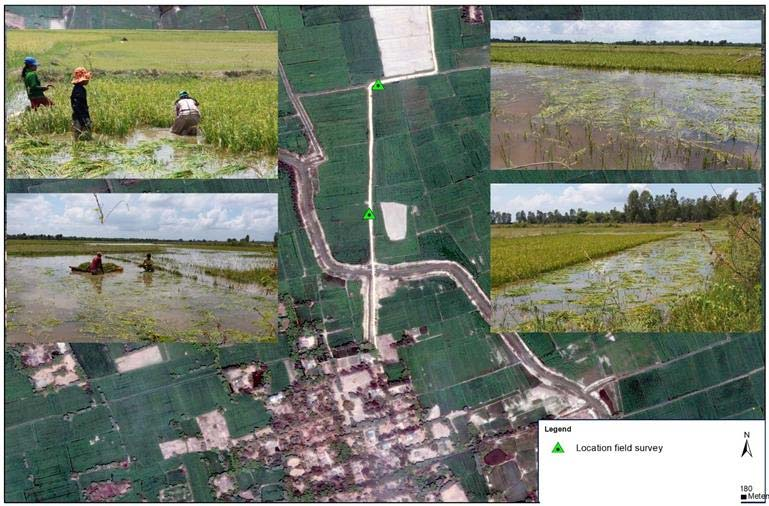

Mekong River is the longest river in South east Asia and one of the largest rivers in the world which has 795,000 km2 of watershed area ranking the 12 th in the world. The Mekong Cambodia Delta and the Tonle Sap Great Lake floodplain is the most productive rice and capture fishery ecosystem of the country, it is maintained naturally by continuous supplies of nutrient and fertile sediment by the Mekong flood water over the years. The Tonle Sap Great Lake receives annually about 58 to 60% of its water volume from the Mekong annually. The Mekong and the Tonle Sap rivers are the main channel for migratory fish between the spawning and feeding ground, the timing and the amount of the reverse flow and flood pulse are very important for the capture fisheries. Seemingly, the fertile agricultural land along the mainstream river bank and their respective floodplains are continuously replenished by the supply from different catchment upstream.But since after the end of the armed conflict in the region and with the rapid demographic expansion, more food, energy, communication infrastructure are needed and natural resources are being rapidly put into plan for economic gain. The catchment has experienced a proliferation of hydropower plants built and planned on the Mekong mainstream and its tributaries, forest resources have been rapidly depleted, converted into commercial agricultural land, many roads and bridges built linking different economic zones, the exploitation of the mining resources has also experienced unprecedented exploitation intensities. At local level, within the Mekong delta and Tonle Sap Great Lake, unprecedented infrastructure development in the communication, urbanization, agriculture and social sectors are also increasing very fast. In the Mekong delta part of Cambodia, agriculture and fishery sectors that support the livelihood of more than 80% of the population are facing increasing constraints such as decline in fish capture, stagnant rice yield that need increasing expensive inputs such as fertilizer and pesticide, particularly for the poor and most vulnerable. Low investment in water resources management infrastructures put increasing higher risk to crop losses due to floods (early flood) and droughts (late season crop)Furthermore climate changes according to different projection models will add more negative impacts to the region particularly the poor with inadequate resilience capacity to cope with rapid and continuous changes. As example, the 2015, the driest year that has never been recorded, has tremendous impacts on fishery and rice production in the flood plain. Under natural condition the Mekong flow downstream might not that severe, but most part of the flows are retained in the upstream reservoir, leaving only a minimum part that they cannot retain. At the MRC level we could observe also that there is a shortcoming in the drought warning and responsive measures in the equitable use of the Mekong water.As consequence, during the past decades, significant negative impacts have already taken place in the Mekong delta-TLS GL system, The production of capture fisheries continue to decline and the cause of this decline is not only from upstream development but also overfishing, degradation of habitat, weak management system are also to be blamed. Water resources development and management in the Cambodia Mekong Delta and Tonle Sap Great Lake region is extremely complex which should be based on well-established strategy based on solid scientific data and information supported by a strong technical institution that might take a long period of time to fully developed but needs to start as soon as possible to function as guiding framework. The initiative of the Mekong-Great Lake diversion are linked to the the Tonle Sap barrage and the embankment of the West Bassac and part of the Mekong mainstream including the colmatage canal systems. This proposed Project of Water Resources Management and Development on the Mekong River linking with Catchment of the Tonle Sap Great Lake would help to cope with above matters.
Read more...
Priority Sector
Infrastructure
Country

Beneficiaries
170000

Duration
Mar-2017 to Feb-2018
(If you would like to know more about the project, or engage with us, contact us .)

